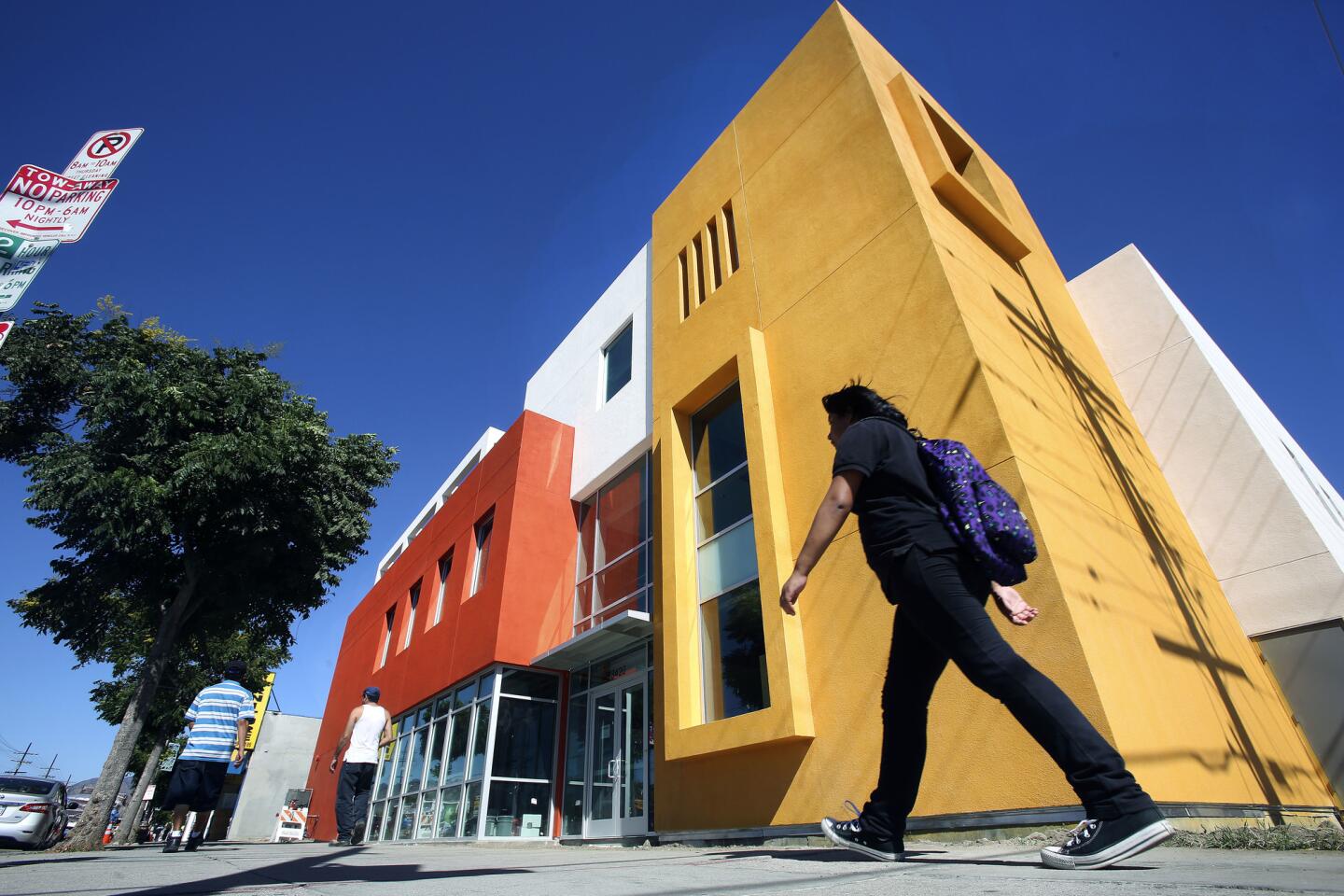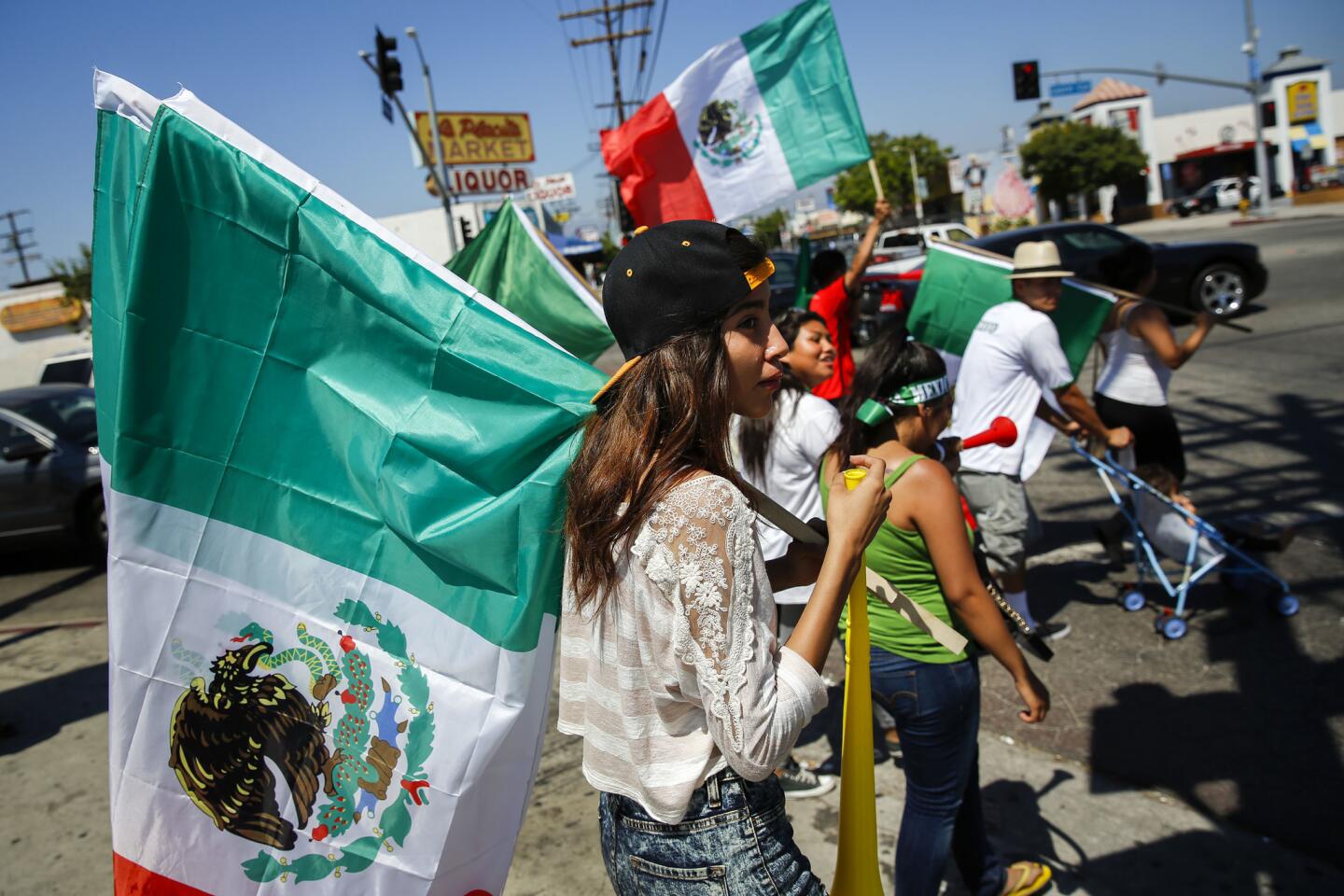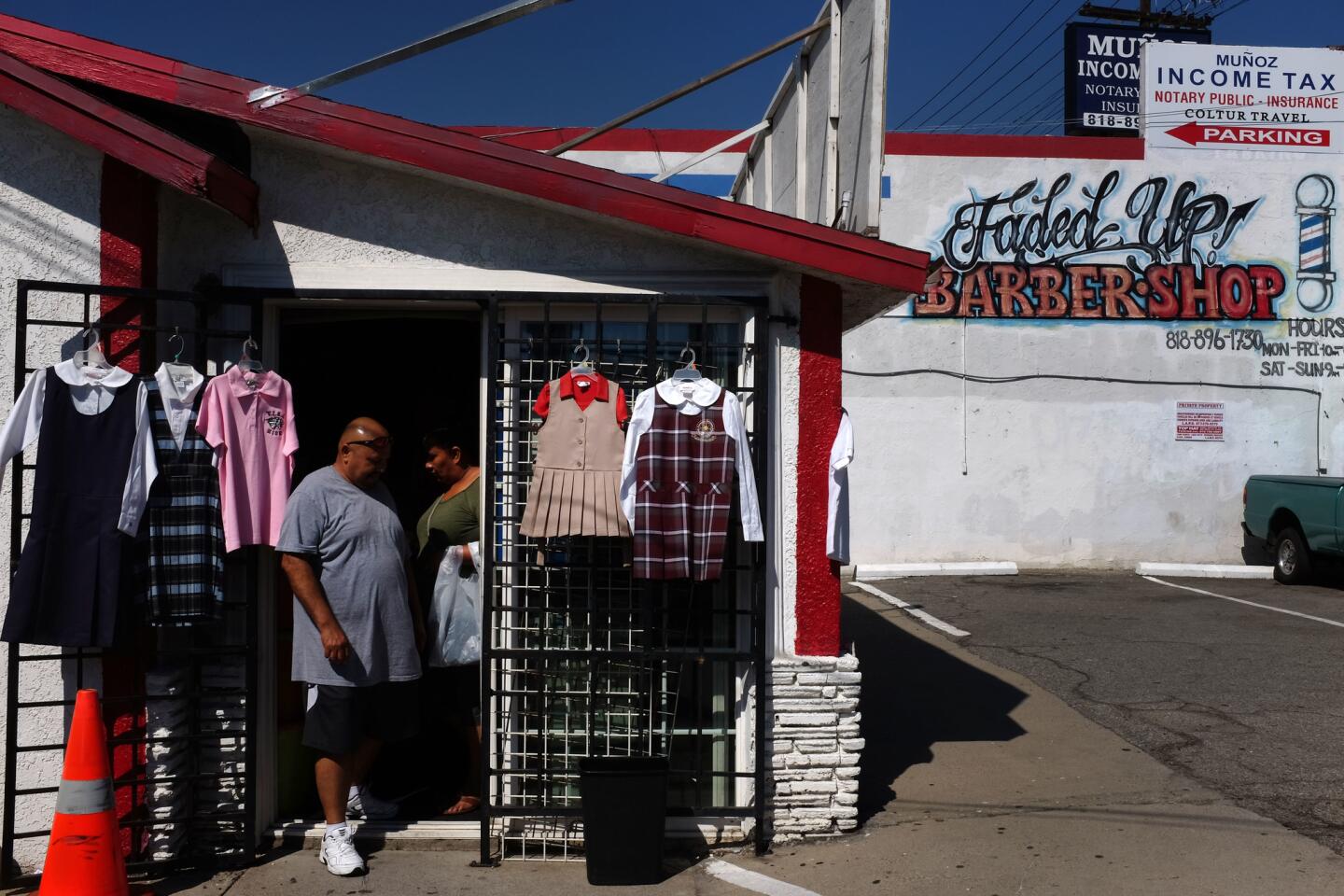Neighborhood Spotlight: Pacoima’s lackluster is hiding some bargains
- Share via
Like most communities in the San Fernando Valley, Pacoima’s roots are in agriculture.
At the end of the mission era, when Mexico took control of what had been Spanish land holdings, the land on which Pacoima would be founded became part of the accurately, if not quite melodiously, named Rancho Ex-Mission San Fernando.
As the land boom of the late 1800s gathered steam, the old mission was carved up by real estate speculators who began founding towns close to the railroads that served to open up the interior valleys of California to settlement.
One such speculator was Jouett Allen, a Southerner and lawyer who bought 1,000 acres of land between two of the washes that funnel the runoff from the Santa Susana Mountains into the Los Angeles River.
He kept 500 of those acres for his own use; in 1887 the other 500 became the site of a town he founded along the Southern Pacific Railroad tracks. He called this new settlement Pacoima, which he contended was the Gabrielino phrase for “rushing waters” — an appellation that would prove to be grimly prophetic.
Allen envisioned a wealthy enclave of gentlemen farmers, so he set $2,000 minimums for the cost of new houses, built concrete sidewalks and curbs (the first in the Valley) and installed a rudimentary water system in an effort to attract them to his fledgling town.
Unfortunately for Allen, the boom went bust, and much of the town was swept away by raging floodwaters in 1891.
Pacoima remained relatively semirural for the next 50 years or so. As one of the only neighborhoods in the Valley without racially discriminatory housing covenants, it became home to Angelenos who could not live elsewhere in the city. First Japanese immigrants, then newcomers from Mexico, and, after World War II, African Americans, made their way to Pacoima.
The African American experience in Pacoima is a particularly resonant, and now almost forgotten, chapter in the history of the Valley. In the 1960s, 90% of the Valley’s black population lived in Pacoima, forbidden to buy or rent elsewhere.
Although efforts were made to create homeownership opportunities in Pacoima through such developments as the Joe Louis Homes, it wasn’t until the abolishment of racial covenants in the late 1960s that African American Angelenos began to move to other parts of the Valley.

Neighborhood highlights
The price is right: As one of the more affordable corners of the Valley, Pacoima has decent-sized homes for less than $500,000.
The Mural Mile: A stretch of murals along Van Nuys Boulevard includes works by artists such as Levi Ponce and pays homage to the rich cultural heritage of this part of the Valley.
A day at the park: Nearby Hansen Dam offers swimming, fishing, boating and picnicking.
Neighborhood challenge
Under the radar: Ask Angelenos to name the defining characteristics of Pacoima and you’ll likely draw blank stares, meaning it’s unlikely to become L.A.’s next hot neighborhood.
Expert insight
Michael Arditto of HomeSmart Real Estate has been selling homes in Pacoima for 15 years and has seen the population surge during that period. Despite its growth spurt, he said, the area has maintained its diversity.
“People here spend a lot of time outside,” Arditto said. “They barbecue and play soccer in Roger Jessup Park, and there’s always lots of activity at Hansen Dam and Mission San Fernando.”
Over the years, the neighborhood’s architectural styles have changed, from almost exclusively Southwestern-style homes to more modern designs.
New businesses moving to Pacoima means more jobs, which Arditto said is leading to a low-inventory housing market.
“People want to live by their workplace,” he said.
Market snapshot
In the 91331 ZIP Code, based on 30 sales, the median sales price in August for single-family homes was $472,000, according to CoreLogic. That’s a 11.1% increase in median sales price year over year.
Report card
There are eight public schools within the Pacoima boundaries. Haddon Avenue Elementary scored 773 in the 2013 Academic Performance Index. Hillery T. Broadous Elementary and Pacoima Middle scored 752 and 733, respectively.
Times staff writer Jack Flemming contributed to this report.
MORE FROM HOT PROPERTY
Dolly Read and Dick Martin’s home on Broad Beach sells for $7 million
Montecito estate once owned by actress Geena Davis seeks $21.5 million
Film producer Bob Yari lists his Beverly Hills Post Office-area home for sale
More to Read
Sign up for Essential California
The most important California stories and recommendations in your inbox every morning.
You may occasionally receive promotional content from the Los Angeles Times.









